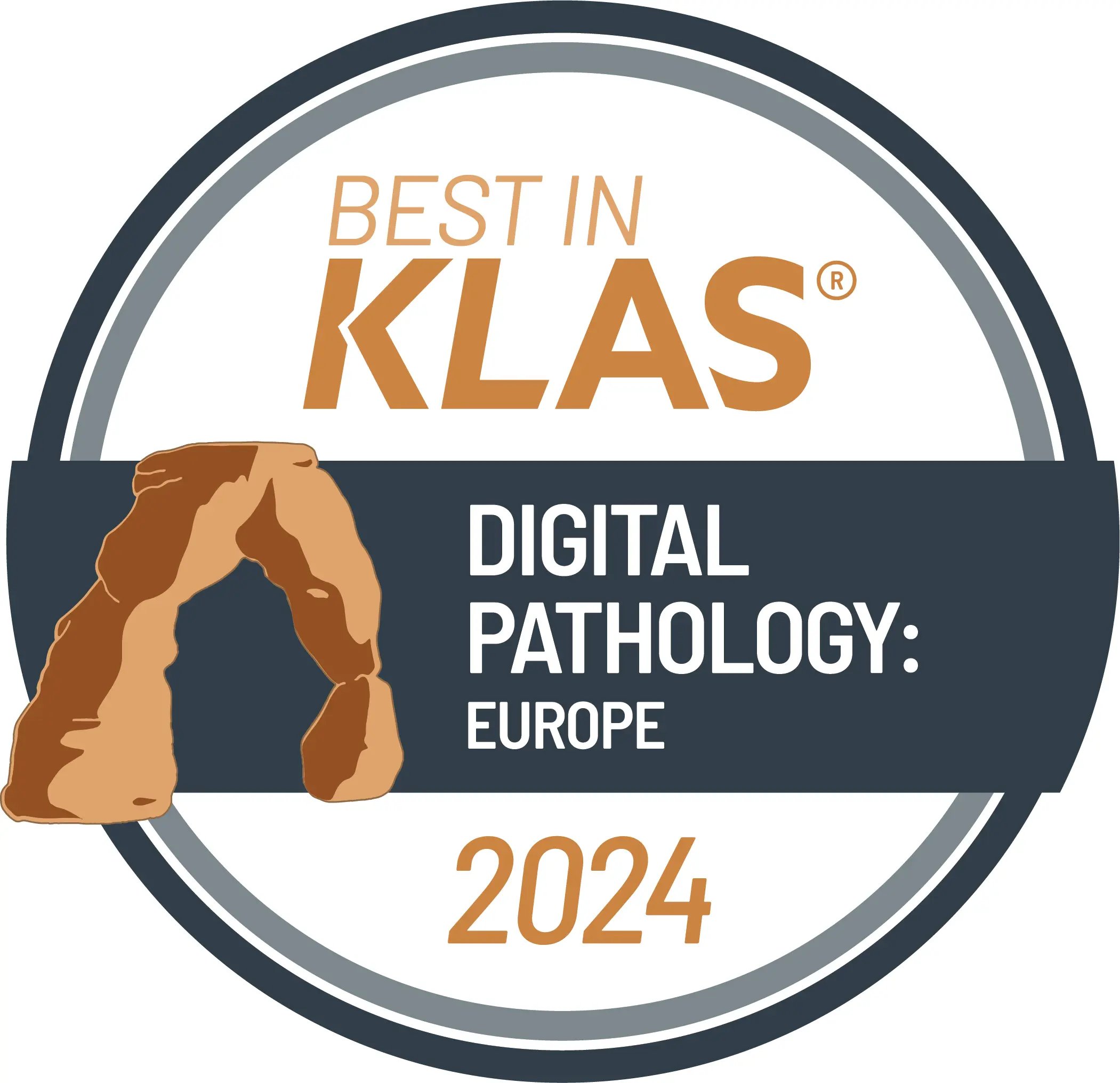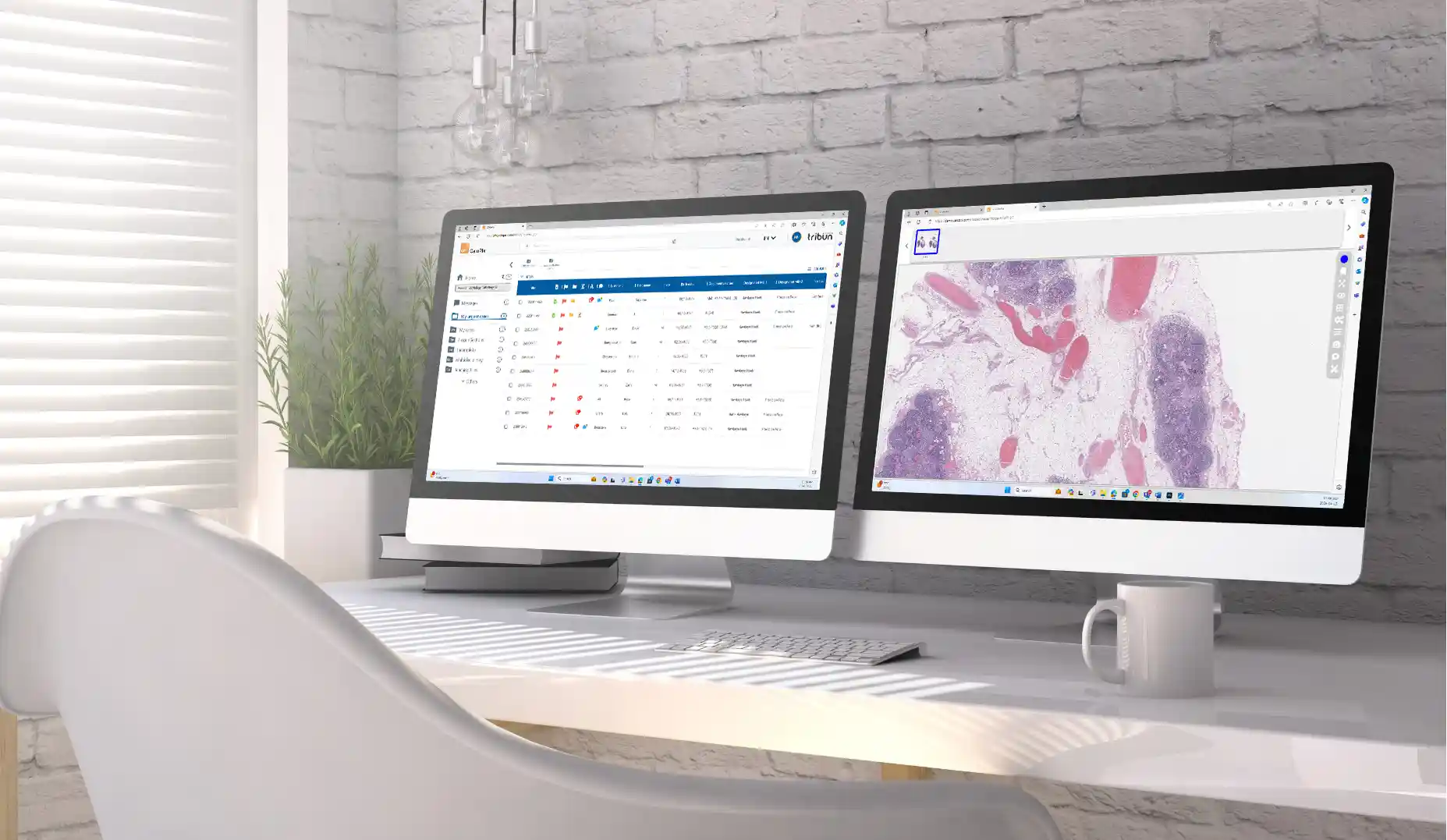On Wednesday February 3, 2023, Tribun Health hosted a webinar on the three golden rules for a successful digital pathology project (French). As an experienced pathologist, our guest Marie Brevet, MD PhD shared her expertise and advice to help healthcare professionals successfully complete their digital pathology project.
The webinar drew a diverse audience, including anatomical pathologists, project managers, and academics. Attendees had the opportunity to ask questions in real-time and engage with Dr. Brevet throughout the presentation.
In this article, we recap the essential takeaways from the webinar and offer valuable information for those interested in pursuing a digital pathology project. By summarizing the key points, we aim to provide a comprehensive resource for healthcare professionals looking to implement or improve their digital pathology systems.
Three golden rules for a successful digital pathology project
To ensure the success of a digital pathology project, Marie Brevet has identified three fundamental golden rules. In this section, we'll explore these three essential pillars in detail:
- Have a clear vision and precise objectives
- Build a multidisciplinary team
- Supporting change
Rule #1 Have a clear vision and precise objectives

The first golden rule for succeeding in your digital pathology project is to have a clear vision and specific objectives. It is important to know why you want to embark on such a project and what benefits are expected. The objectives may vary depending on:
- the governance structure: private or public organization
- the number of sites: single or multi-site
- the challenges encountered: medical or/and technical
- the integration need or not of immunofluorescence and cytology, and
- the appetite to use of artificial intelligence algorithms.
Marie Brevet emphasized the importance of defining clear objectives at the beginning of the project, as this will guide decisions and actions throughout the planning and execution process. She also advised taking into account the needs and expectations of the different stakeholders, including doctors, technicians, patients and those providing financial support.
Rule #2: Assemble a multidisciplinary team

The second golden rule is to assemble a multidisciplinary team to carry out the project. This team should include key players such as:
- A Lab Manager
- An IT Manager
- A Medical Team (preferably two doctors with different specialties)
- A Project Manager
It's crucial for this team to engage in discussions early in the process, even preceding the selection of scanners and software. This proactive approach is essential because the type of scanner chosen significantly influences image size, consequently affecting the infrastructure requirements, including servers and internet bandwidth necessary for image circulation.
Marie Brevet further stressed the critical role of communication within the team. Ensuring that all team members are kept informed about the project's progress and any challenges encountered is essential. Effective communication facilitates prompt problem resolution and helps prevent delays in project implementation.
Rule #3: Supporting change

Finally, the third golden rule is to support the change by planning, setting milestones and steering the project. It's important to set up regular steering committees to monitor the project's progress and resolve any problems that arise. It's also important to communicate effectively between all those involved, so that everyone is always well informed of the project's progress.
Marie Brevet highlighted the pivotal role of change management in ensuring the success of a digital pathology project. To this end, it is important to provide training for end-users and involve them in the decision-making process, while taking their feedback into account. In addition, it may be wise to draw on the expertise of IMS and scanner suppliers, who can help structure the project and define deadlines. The choice of supplier is therefore essential, not only for the quality of the software, but also for the services offered in terms of consulting, implementation, training, interoperability and maintenance. A supplier offering dedicated services can help maximize the benefits of digital pathology while minimizing the risks and limitations.
The benefits of digital pathology
Digital pathology is a fast-growing field that offers many benefits for healthcare professionals and patients alike. In this section, we explore the direct and indirect benefits of digital pathology.

Direct benefits
The direct benefits of digital pathology are numerous, and can have a significant impact on quality of care. First of all, digital pathology can increase business by reducing sample processing time. Indeed, digitizing slides enables faster and more efficient research, which can reduce diagnosis time.
In addition, digital pathology can offer considerable time savings for doctors and technicians. Searching for slides can be tedious and time-consuming, particularly in large hospitals or laboratories handling large numbers of samples. As Marie Brevet explains, "digitizing slides enables faster, more efficient searching, which can free up time for other important tasks".
Finally, digital pathology can offer a patient benefit by enabling faster access to diagnosis. Patients no longer need to wait for samples to be physically transported from one place to another for analysis. Marie Brevet points out that "digital images can be sent instantly to a specialist doctor anywhere in the world, which can reduce waiting time for the patient and improve their overall experience" with telepathology tools such as TeleSlide® Patho.
Indirect benefits
In addition, digital pathology can offer indirect advantages for healthcare professionals and patients alike. Firstly, digital pathology may be more attractive for recruiting pathologists. According to Marie Brevet, "young doctors are increasingly attracted to digital technologies and are more likely to choose a healthcare facility that uses advanced digital tools".
What's more, digital pathology can offer cost savings that have yet to be accurately assessed. Storage costs for physical slides can be high, particularly in hospitals or laboratories handling large numbers of samples. Digitizing slides can reduce physical storage costs and enable more efficient use of space.
Finally, digital pathology can offer educational and innovative benefits. Digital images can be used for educational purposes, enabling medical students and doctors in training to visualize tissue samples and learn in a more interactive way. In addition, digital pathology can pave the way for innovations such as the use of artificial intelligence to help diagnose disease.
The limits of digital pathology
While digital pathology offers numerous benefits, it's essential to acknowledge its limitations. Primarily, the ecological footprint of digitizing slides warrants consideration. The servers and data centers necessary for storing and processing digital images can consume substantial energy, exerting an environmental impact. Nonetheless, digital pathology also presents opportunities for reducing laboratories' reliance on physical shipping of slides, thereby mitigating road traffic and pollution.
What's more, initial investment costs can be high, especially for smaller organizations. The scanners, servers and software needed to set up a digital pathology system can be expensive. However, it's important to note that long-term savings can offset these initial costs.
Finally, digital pathology may require training and familiarization on the part of healthcare professionals. Doctors and technicians may need time to adapt to new tools and processes, and proper training and change management is essential to ensure a smooth transition to digital pathology.

In conclusion, the webinar "Three golden rules for a successful digital pathology project (French)" highlighted the many benefits of digital pathology for healthcare professionals and patients, such as increased activity, time savings, faster access to diagnosis, increased attractiveness for recruiting pathologists, long-term cost savings and educational and innovative advantages. However, it is important to consider the limitations of this technology, such as ecological impact, initial investment costs and the need for training and adaptation on the part of healthcare professionals.
By following the three golden rules for a successful digital pathology project - having a clear vision and precise objectives, building a multidisciplinary team and supporting change - healthcare professionals can maximize the benefits of this technology while minimizing the risks and limitations. The practical advice and useful information provided during this webinar can help healthcare professionals to successfully complete their digital pathology project and improve the quality of care.
Sources
- Ardon, O. et al. (2023) 'Digital pathology operations at a tertiary cancer center: Infrastructure
requirements and operational cost,' Journal of Pathology Informatics, 14, p. 100318. [online]
Available at: https://www.sciencedirect.com/science/article/pii/S2153353923001323?via%3Dihub - How to Go Digital in Pathology. (n.d.). [online] Available at:
https://thepathologist.com/fileadmin/issues/App_Notes/0016-022-app-note-
How_to_Go_Digital_in_Pathology.pdf - Cross, S., Furness, P., Igali, L., Snead, D. and Treanor, D. (2018). Best practice recommendations for
implementing digital pathology Unique document number G162 [online] Available at:
https://www.rcpath.org/static/f465d1b3-797b-4297-b7fedc00b4d77e51/Best-practice-
recommendations-for-implementing-digital-pathology.pdf - Montezuma, D., Monteiro, A., Fraga, J., Ribeiro, L., Gonçalves, S., Tavares, A., Monteiro, J. and
Macedo-Pinto, I. (2022). Digital Pathology Implementation in Private Practice: Specific Challenges
and Opportunities. Diagnostics, 12(2), p.529. [online] Available at: https://www.mdpi.com/2075-
4418/12/2/529





.png?width=256&height=256&name=customer-service(1).png)



.png?width=64&height=64&name=calendrier(1).png)
.png?width=64&height=64&name=communique-de-presse(1).png)
.png?width=64&height=64&name=livre(1).png)
.png?width=64&height=64&name=blog(2).png)









